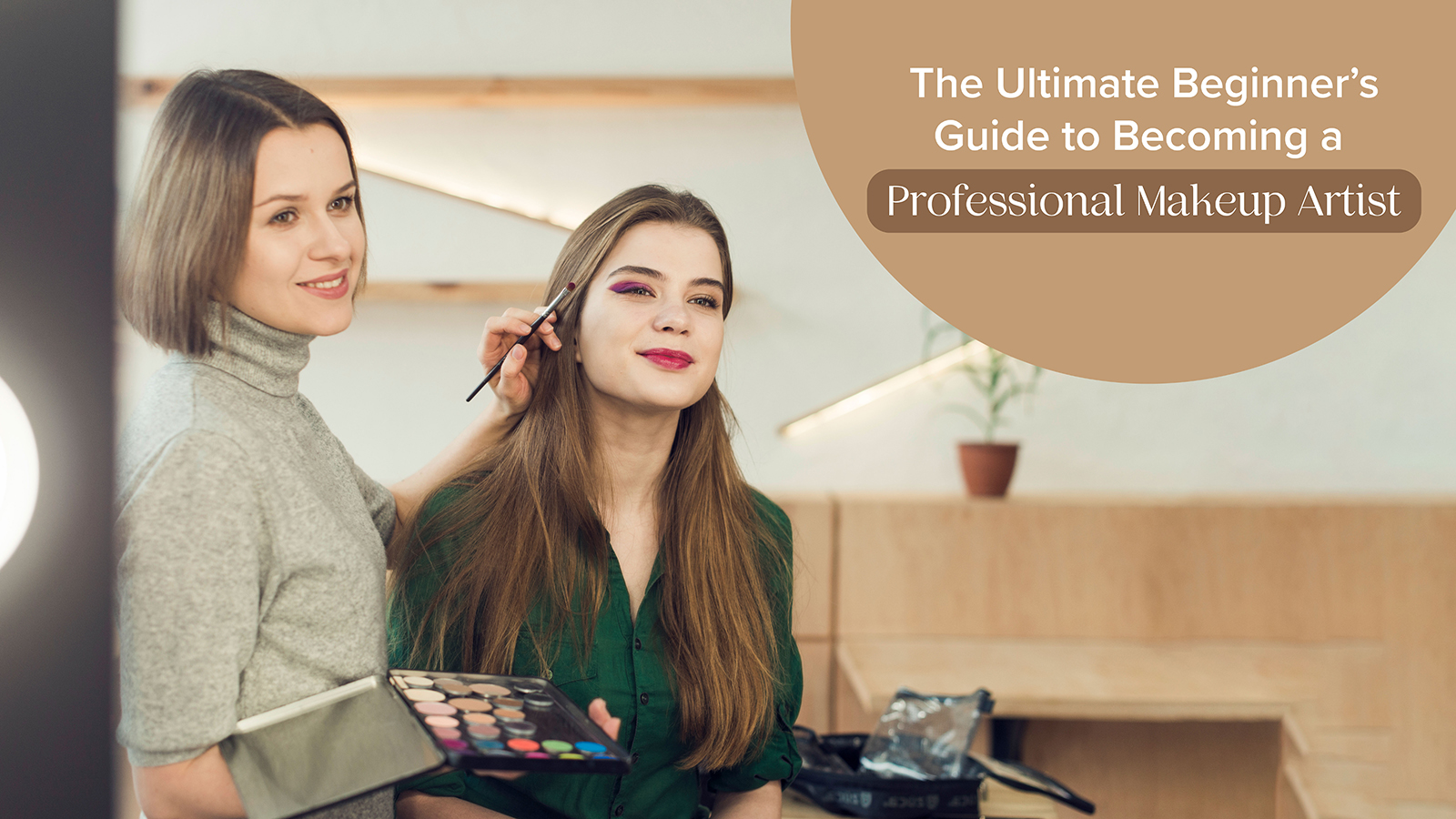The Ultimate Beginner’s Guide to Becoming a Professional Makeup Artist

Embarking on a career as a makeup artist (MUA) is both exciting and challenging. Whether you dream of working in fashion, bridal, or editorial makeup, the journey to becoming a successful makeup artist involves mastering not only makeup techniques, but also client interactions and hygiene practices. This guide is crafted to help budding MUAs kickstart their professional journey with confidence and creativity.

1. Prepping the Canvas: Steps to Prepare the Skin for Makeup
Every masterpiece needs a perfect canvas. Similarly, the secret to flawless makeup lies in skin preparation. Here’s how to ensure your client’s skin is ready for makeup:
- Cleansing: Begin with a gentle cleanser suitable for your client’s skin type. Cleansing removes dirt and excess oil, creating a clean base.
- Exfoliation: Light exfoliation helps remove dead skin cells, making the skin smooth. This step is crucial for a more even makeup application.
- Moisturising: Hydration is key. Choose a moisturiser that suits the client’s skin type — hydrated skin ensures that the makeup doesn’t crack or crease.
- Primer: A good primer is a game-changer. It not only blurs imperfections, but also ensures the makeup lasts longer. Opt for a primer that complements the skin’s needs, such as mattifying for oily skin or hydrating for dry skin.
Pro MUA Tip: Always ask about any skin sensitivities or allergies before beginning skin prep.
2. Mastering the Basics: Guide to Base and Eye Makeup
Understanding the basics of base and eye makeup sets the foundation for your journey as a makeup artist. Let’s break it down:
- Base Makeup Tips:
- Foundation: Choose the right shade by matching it to the client’s neck, not their face. Blend well using a brush, sponge, or even your fingers, for a natural finish.
- Concealer: Use concealer to hide blemishes, dark circles, and other imperfections. Remember, less is more. Build coverage gradually.
- Setting Powder: Set the foundation and concealer with a translucent powder to prevent creasing.
- Eye Makeup Tips:
- Brows: Fill in sparse areas with a brow pencil or powder, following the natural shape.
- Eyeshadow: Start with neutral shades. Build depth using darker shades on the crease and blend well.
- Eyeliner and Mascara: A thin line of eyeliner close to the lashes enhances eye shape. Finish with mascara for a defined look.
- Using False Lashes: Select false lashes that complement your client’s eye shape and the occasion. Choose light voluminous lashes for a more organic look and faux mink or 3D lashes for a dramatic look.
Pro MUA Tip: Practice blending — well-blended makeup is the hallmark of a pro MUA.
3. Tools of the Trade: Essential Tools and Hygiene Practices
A well-equipped kit is the MUA’s best friend. Here’s what you need:
- Brushes: Invest in a set of good-quality brushes. Ensure that you have a variety of brushes for different purposes — foundation, eyeshadow, blending, etc.
- Sponges and Puffs: Perfect for blending and setting makeup, you must keep a few on hand. Remember to wash them regularly.
- Sanitisers: Hygiene is paramount. Use sanitizers for hands and disinfectants for brushes and tools. Also, use a spatula for creams and gels. Never double-dip into products.
- Disposable Applicators: Use disposable mascara wands and lip applicators to avoid cross-contamination.
Pro MUA Tip: Clean your brushes after every use to prevent bacteria build-up.
4. Beyond the Brushes: Improving Client Communication

Mastering makeup techniques and makeup tips is just one part of being a successful MUA. Effective communication with clients is equally important:
- Consultation: Always start with a consultation to understand the client’s needs, preferences, and expectations. Ask about their skin type, desired look, and any special requests.
- Building Rapport: Make your client feel comfortable. A friendly, professional demeanour goes a long way in building trust.
- Feedback: Don’t shy away from asking for feedback during and after the session. It shows you value their opinion and are open to improvements.
- Professionalism: Punctuality, cleanliness, and a positive attitude are non-negotiables in client interactions.
Pro MUA Tip: Keep a portfolio of your work and encourage clients to leave reviews or testimonials.
Conclusion
Becoming a professional makeup artist requires more than just technical skills — it’s an art of combining creativity with client service. By focusing on proper skin preparation, mastering makeup basics, using the right tools, and honing client communication, you’ll be well on your way to a successful career as a makeup artist. Remember, every face is a canvas waiting for your artistic touch!






